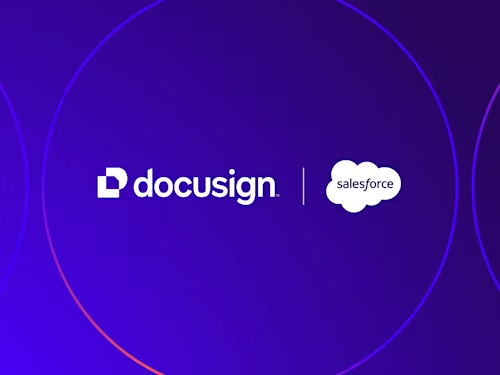
7 dicas de abordagem de negociação para impulsionar resultados
7 dicas de abordagem de negociação para impulsionar resultados, veja cada etapa e como melhorar para vender mais e mais,


Ainda bem que temos a capacidade de aprender. Assim conseguimos desenvolver habilidades que nos tornem mais eficientes na arte da negociação. Afinal, dependemos de uma boa abordagem para levar as vendas adiante e, com isso, impulsionar os resultados. Não se trata de nada fora do alcance, mas sim de pequenas mudanças de comportamento e atitudes que podem contribuir (e muito) para o estabelecimento de um diálogo produtivo com os clientes, levando a conversões de mais qualidade para a empresa. Que mudanças são essas e como colocá-las em prática? Descubra agora mesmo!
Saiba com quem está falando
Quando um potencial cliente senta à sua frente, ele espera um atendimento personalizado, imagina que você tenha pesquisado sobre ele, quer que conheça minimamente seu perfil. Sem esse preparo prévio, você pode facilmente subestimá-lo, oferecendo algo que não tem nada a ver com o que ele precisa. Também pode errar ao oferecer o que ele na verdade já possui. E essas falhas comprometem totalmente sua credibilidade.
Assim, se você tenta negociar um software de CRM voltado para indústrias com um comprador de uma empresa de serviços, por exemplo, dificilmente terá sucesso na sua abordagem de negociação. Afinal, a ferramenta não atenderá às expectativas do comprador. O mínimo que você deve fazer, portanto, é procurar conhecer previamente seus possíveis clientes.
Conheça seus limites
Iniciar uma negociação com o menor valor que a empresa pode praticar é absolutamente fatal. Nesse caso, você não terá como argumentar com o cliente sem causar prejuízo ao negócio. E mesmo que abra o jogo, dizendo que esse é o valor mínimo e, por isso, uma oferta irrecusável, ele pode muito bem achar que você está blefando.
O melhor a fazer, portanto, é começar com o máximo, aquele valor que a empresa gostaria de receber pelo produto ou serviço oferecido. Aí, a partir das argumentações do cliente, você vai reduzindo a margem de lucro até determinado limite — definido na política comercial da companhia. Atingido esse mínimo, mesmo com pressão do cliente por preços ainda mais baixos, corte a negociação. Entenda: esse tipo de cliente não é rentável e quer sempre impor sua vontade, gerando mais estresse que benefícios.
Ouça mais e fale menos
Por mais que o desejo de convencer o cliente a comprar logo seja natural, essa afobação tende a nos levar para o caminho errado. Assim, falamos sem parar e não ouvimos quem efetivamente precisa da solução. Para evitar cair nessa armadilha, procure exercitar seu poder de audição, deixando que o cliente conte os problemas pelos quais vem passando e diga o que espera do produto ou serviço que você tem a oferecer.
Durante esse processo, faça anotações para registrar o que ele apresentou inicialmente. Essa é sua necessidade. Ao mesmo tempo em que ouve, vá pensando em como sua empresa pode ajudá-lo. Quando não entender direito determinado ponto da narrativa, interrompa educadamente e peça que explique. É simples: quanto mais informações ele der, melhor será sua argumentação no momento da negociação.
Crie um roteiro
Na prática, muitos potenciais clientes desandam a falar, vão e voltam ao mesmo assunto diversas vezes e abordam temas que nada têm a ver com o propósito da negociação com seu negócio. Como não poderia deixar de ser, é claro que esse contexto torna a reunião improdutiva.
A boa notícia é que escapar desse cenário é fácil. Basta criar um roteiro para conduzir a conversa. Assim, quando o cliente começar a fugir do assunto, retome rapidamente a negociação com frases como: “o senhor estava me dizendo que seu sistema de gestão não atende às necessidades da empresa. Fale-me mais sobre isso”. O segredo está em seguir seu planejamento de forma a captar o máximo de informações no menor tempo possível. Empresas costumam utilizar modelos, como o AIDA, para criar um roteiro direcionado para o tipo de cliente ideal das empresas, descrevendo como atrair, interessar e converter as pessoas
Contorne objeções com argumentação
Mesmo quando o cliente se mostra irredutível, com diversas objeções à compra, não desanime. Se você sabe com quem está falando, criou um roteiro para a conversa e fez o exercício de ouvir mais e falar menos, certamente tem argumentos de sobra para contornar a situação e chegar à conversão.
Sem pressionar, deixe que o cliente fale e peça a palavra. Para cada objeção apresentada, dê um argumento contrário, sempre positivo. Se ele diz que o preço da solução está acima do seu poder de pagamento, por exemplo, mostre a ele que não se trata de uma despesa, mas de um investimento. Fale sobre as opções de parcelamento que a empresa oferece, sobre os ganhos de outros clientes após a aquisição e sobre a qualidade do produto ou serviço oferecido.
Tenha cartas na manga
Em vez de apresentar uma única proposta de valor para o cliente, apresente 3: uma básica, uma intermediária e uma avançada. Certifique-se de que todas têm mais ou menos o mesmo custo para a empresa. Basta se basear nos pacotes das companhias telefônicas para ter uma ideia de como essa abordagem de negociação funciona: 2 gigas de internet por apenas 20 reais a mais. A ideia é exatamente essa.
Coloque as 3 opções sobre a mesa e mostre as vantagens de cada uma, deixando o cliente livre para escolher. O simples fato de ter um plano premium, com uma vantagem ou uma nova tecnologia com suporte 24 horas, por exemplo, pode mudar seu ponto de vista e levar a uma conversão de mais qualidade.
Reduza a burocracia
Por incrível que pareça, muitas negociações falham puramente pela demora no atendimento ao cliente, o que dá tempo para que a concorrência chegue primeiro e vença a partida. É um clássico caso de burocracia paralisando a negociação.
Contratos que vão e vêm, assinaturas que demoram, envelopes que são extraviados ou simplesmente esquecidos sobre uma mesa: tudo isso pode minar seus resultados de forma a se tornar quase impossível recuperar o cliente que se foi. Nesse caso, o que fazer?
Colocar a tecnologia a seu favor — e a favor dos seus clientes! Use sistemas do Agreement Cloud para gerenciar os contratos e facilitar a conclusão por meio da assinatura eletrônica. Tais tecnologias proporcionam maior confiabilidade ao processo de negociação e agilizam o atendimento ao cliente, conferindo maior credibilidade à sua empresa.
Como você pôde ver, construir uma abordagem de negociação que impulsione resultados é fruto de um trabalho contínuo de melhoria de processos e atitudes do time de vendas. Então realize um teste grátis da plataforma de assinatura eletrônica da Docusign.

Publicações relacionadas
Docusign IAM é a plataforma de acordos que sua empresa precisa para o sucesso

